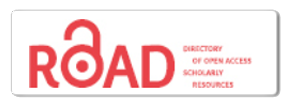IMPLEMENTATION of SuKMa-e JATIM APPLICATION TO INCREASE PUBLIC SATISFACTION INDEX IN EAST JAVA PROVINCE
DOI:
https://doi.org/10.70248/jogapa.v2i3.2437Keywords:
SuKMa E Jatim, Public Satisfaction Index, Public Service ApplicationsAbstract
The purpose of this study was to investigate how the application providing feedback on public services SuKMa-e Jatim, which stands for the East Java Electronic Community Satisfaction Survey, has an impact on increasing the community satisfaction index in East Java Province. It is expected that this application can improve the quality of public services by helping the community , as well as to assess the level of community satisfaction with the quality of services by public service providers. This study uses a quantitative method by sending questionnaires to people who use the application in various regions in East Java Province . To improve public services, the use of the SuKMa-e Jatim application contributes significantly to increasing the community satisfaction index. Influential factors include ease of use of the application, speed of response to community input, and transparency of information provided. This study also identified several challenges in using the application, such as the lack of understanding of technology among some people and the need to increase socialization about the benefits of the application. The conclusion of this study confirms that the SuKMa-e Jatim application has an important role in increasing satisfaction with customers, colleagues, and leaders in East Java Province. Recommendations are given to improve digital literacy training for the community and expand socialization about this application so that it can be utilized optimally. The results of this study are expected to be used as a reference in the development of other public service information systems in Indonesia.
References
Alfiana, AT (2019). Analysis of the Quality of Health Services at Level IV Hospitals in Madiun City in 2019. Bhakti Husada Mulia Madiun Health College.
Dhita, A., & Amrynudin, K. (2024). Optimizing public services through digital ina and its challenges . XVI (11).
Kasmir. (2017). Customer-Service-Excellent-2-scaled-648x969 . Grafindo.
Kennedy, A., Surya, WH, & Wartoyo, FX (2024). Challenges and Solutions for Implementing E-Government in Indonesia . 4 (2), 134–147.
Kotler, P., & Keller, K. L. (2013). Marketing Management. In 13th Edition, Volume 2 (13 vols. 2, p. 412). Erlangga.
Larasati, AD, & Pertiwi, VI (2025). Level of Public Satisfaction with Public Services at the Public Works and Highways Department of East Java Province Through a Public Satisfaction Survey. Future Academia: The Journal of Multidisciplinary Research on Scientific and Advanced , 3 (2), 531–543.
Lena, FEM (2018). The influence of service quality and hospital facilities on patient satisfaction. Case Study on patients at Karitas Weetabula Hospital . Sanata Dharma University.
Muhtar, M. (2024). Public Information: The Importance of Transparency in Government and Society . Ministry of Finance. https://www.djkn.kemenkeu.go.id/kpknl-makassar/baca-artikel/17385/Informasi-Publik-Pentingnya-Transparansi-dalam-Pemerintahan-dan-Masyarakat.html
Nasrullah, IM, Handoko, VR, & Indartuti, E. (2025). Analysis of Innovation in Electronic-Based Community Satisfaction Survey (E-Sukma) at the Bureau of Organization of the Regional Secretariat of East Java Province. Journal of Social Interactions and Humanities (JSIH) , 4 (1), 295–314.
Nugraheni, ZAA (2015). Analysis of Public Satisfaction with Public Services Based on the Public Satisfaction Index at the Mungkid District Office, Magelang Regency . Yogyakarta State University.
Regulation of the Minister of State Apparatus Empowerment and Bureaucratic Reform of the Republic of Indonesia Number 14 of 2017 Concerning Guidelines for Compiling Public Satisfaction Surveys of Public Service Provider Units, Indonesia 459 (2017). https://doi.org/10.1016/0014-4827(75)90518-2
Putra, KM (2023). The Role of Information Technology in Increasing Transparency and Accountability of Local Government. National University , 13 (2), 1–5. https://www.academia.edu/104746968/PERAN_TEKNOLOGI_INFORMASI_DALAM_MENINGKATKAN_TRANSPARANSI_DAN_AKUNTABILITAS_PEMERINTAH_DAERAH
Rahayu, F., Roekminiati, S., & Pramono, S. (2024). Evaluation of SuKMa-e Jatim in Improving Public Satisfaction Services at the Human Resources Development and Personnel Agency of Gresik Regency. Soetomo Public Administration , 2 (3), 503–524.
Rahmawati, B., & Nafi'ah, BA (2024). Implementation of the Sukma Santri Application as a Container in Efforts to Support the Improvement of Public Service Quality Assessment in the General Section of the Jombang Regency Regional Secretariat. Journal of Public Administration Progress , 4 (1), 69–77. https://doi.org/10.37090/jpap.v4i1.1319
Tjiptono, F. (2014). Marketing Services . Andi.
Sari, AN, Permata, DS, Suhayla, M., & Halimah, N. (2025). Analysis of the Role of Digital Economy in Indonesia's Economic Growth. Journal of Regional Economics, 17(1), 1–13.
Rahmadani, AN et al. (2024). Analysis of E-Commerce as a Digital Economy in Driving Economic Growth in Indonesia. Journal of General Studies and Research, 2(1), 27–33.
Lubis, K., & Efendi, B. (2024). The Role of the Digital Economy in Driving National Economic Growth. Edunomika Scientific Journal, 7(2).
Dwi Kartiko, N., & Widjiastuti, A. (2022). Tax Potential in the Digital Economy and Policy Recommendations. Indonesian Journal of Social Technology, 3(1), 50–73.
Sukarno, MH, Nugroho, L., & Iskandar, D. (2022). Study of Tax Revenue Optimization on the Development of E-Commerce Transactions in the Digital Economy Era. Jurnal Economina, 1(4), 945–957.



















